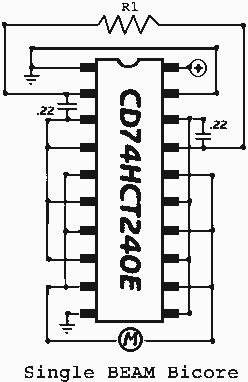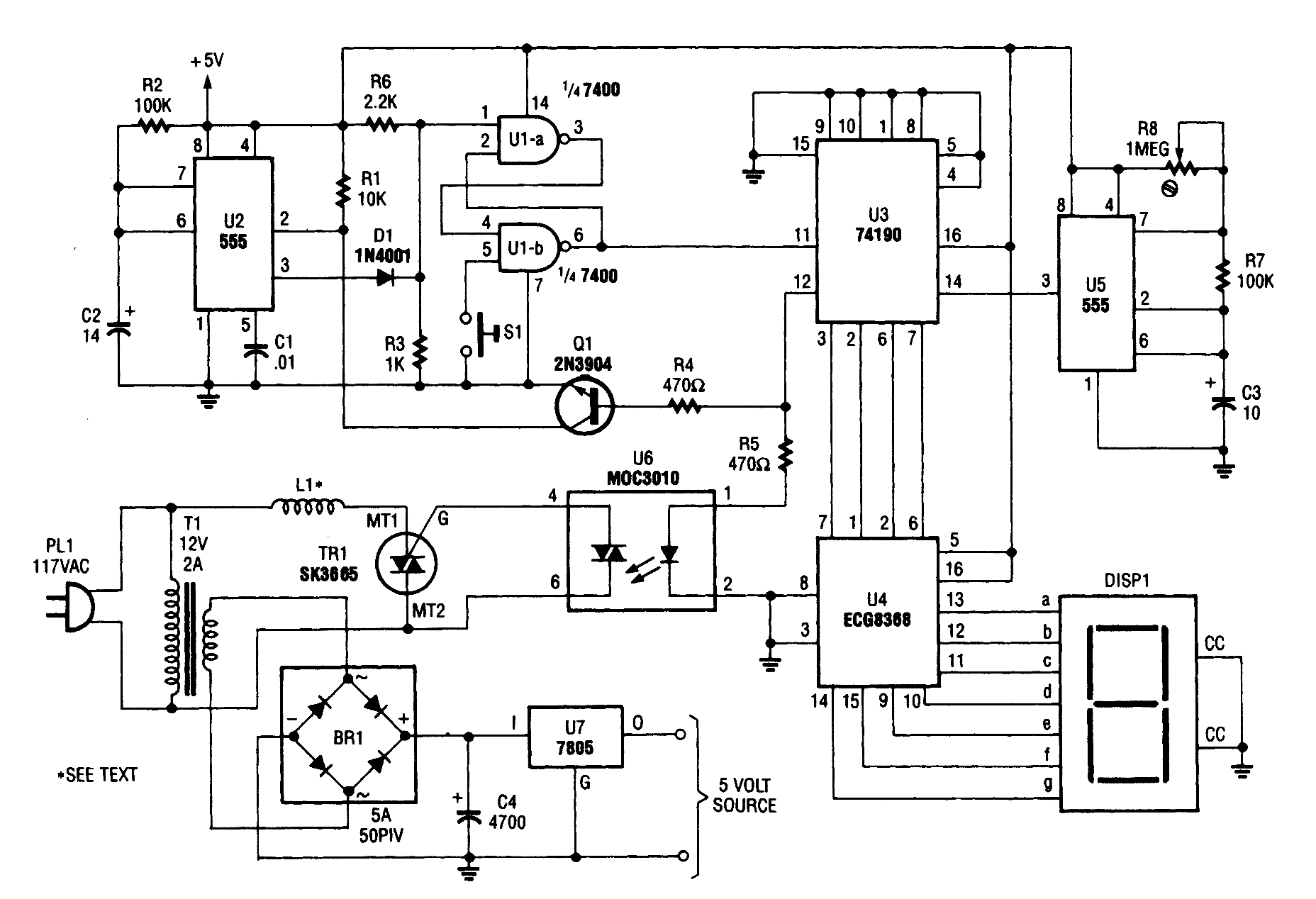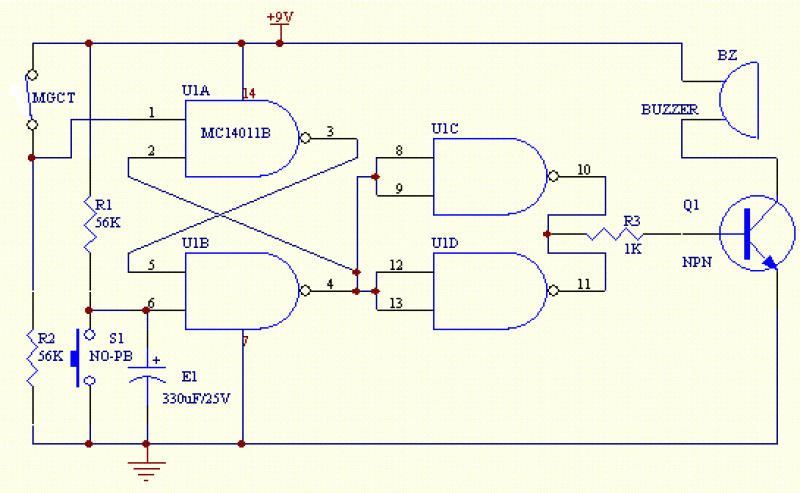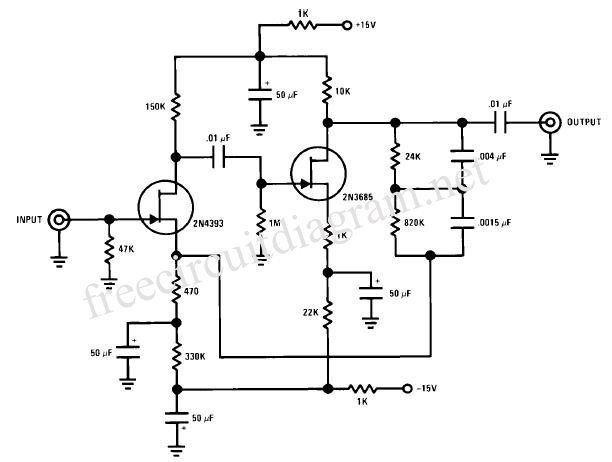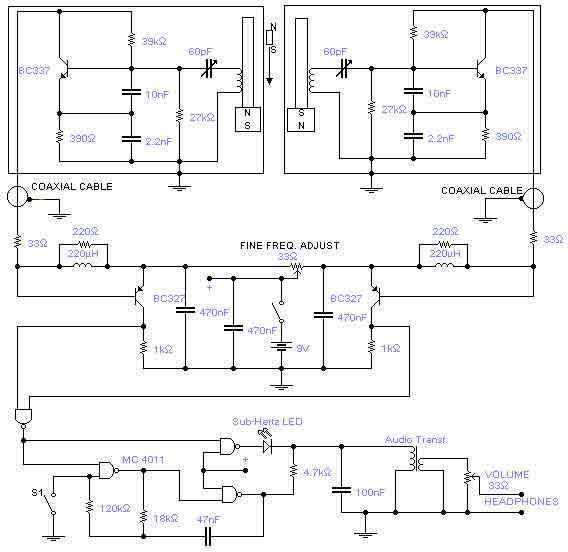
Magnetic core memory reborn
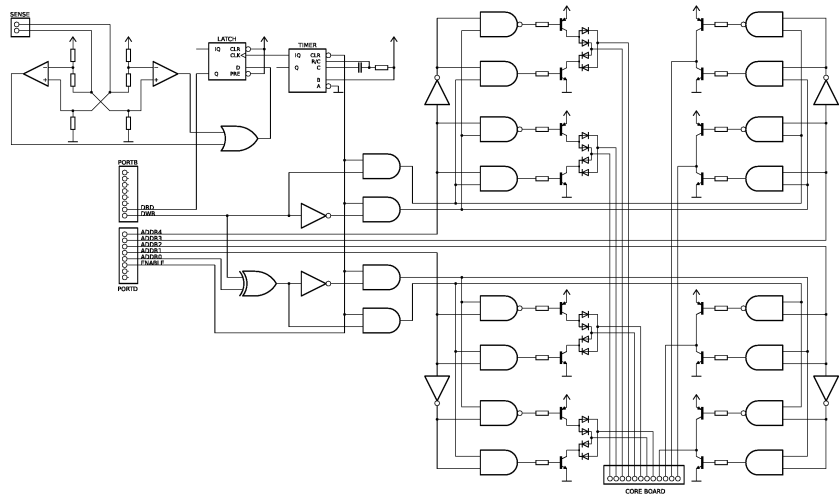
Magnetic core memory was the most widely used form of digital computer memory from its inception in the early 1950s until the advent of integrated-circuit memory in the early 1970s. In addition to being highly reliable, magnetic core memory is attractive due to its simple underlying principle. A magnetic core is a ring made of ferrite material that can be permanently magnetized either clockwise or counterclockwise about its axis, similar to how a vertical bar magnet can be magnetized in an up or down orientation. These two magnetization states can be used to represent the binary values of 0 and 1, allowing the core to function as a bit of digital memory. Importantly, the core does not require power to retain its data, making it a type of non-volatile storage akin to modern hard disk drives, although it served the high-speed role of contemporary RAM in its time. Large memory modules were constructed using numerous cores, exemplified by systems from CDC machines in the mid-1960s. Over time, the size of the cores decreased from approximately 2 mm in diameter in the early 1950s to around 0.4 mm by the early 1970s, with access speeds improving from about 200 kHz to over 1 MHz, leading to memory modules containing more than half a million cores. Remarkably, a magnetic core memory system was still operational in a telephony control system as recently as 2004. This technology continues to fascinate modern enthusiasts and is the origin of the term "core dump," referring to an on-disk image of a process's main memory. The Arduino, specifically the Duemilanove version, is an open-source physical computing device that has eliminated many barriers for those interested in embedded microprocessing. It is a compact single-board computer based on an Atmel AVR microprocessor, equipped with components for USB communication and easy access to input/output pins. Developers program the onboard microprocessor using an integrated development environment (IDE) on a PC. The Arduino has gained immense popularity, with sales reaching six figures, and has been utilized in a wide range of projects, from autopilots for radio-controlled airplanes to CNC sewing machines. Various expansion modules, known as shields, can be added to the Arduino, allowing it to perform an even broader array of tasks, such as driving motors or servos, interfacing with wireless communication modules, or communicating over Ethernet. A project was initiated to explore the principles and practices of core memory, leading to the development of a modern core memory module. The concept was to create a magnetic core memory shield for the Arduino, utilizing surplus ferrite cores manufactured in the 1980s. Modern components such as transistors and integrated-circuit logic gates were incorporated to simplify the design process compared to the original core memory inventors. The outcome was the successful construction of a highly reliable 32-bit core memory shield for the Arduino, which can serve as storage for the Arduino or be accessed by any modern computing device with a USB port. A ferrimagnetic material possesses two distinct permanently magnetized states, which in this application correspond to clockwise and counterclockwise magnetization. The functionality of these cores as computer memory relies on their hysteresis behavior when subjected to an external magnetic field; a strong field aligned with the existing magnetization of the core has no lasting effect as the core reaches saturation.
Magnetic core memory technology represents a significant milestone in the evolution of computer memory systems. Its design principles are rooted in the fundamental properties of ferrimagnetic materials, where the ability to maintain two distinct magnetization states is harnessed for data storage. Each core functions as a bit, with the orientation of its magnetization determining the binary value it represents. The integration of these cores into larger memory arrays enabled the construction of memory modules capable of storing substantial amounts of data while maintaining high access speeds.
The project to create a magnetic core memory shield for the Arduino not only revitalizes interest in this vintage technology but also demonstrates the feasibility of combining historical concepts with modern electronic components. By utilizing surplus ferrite cores, the project preserves a piece of computing history while showcasing the adaptability of core memory in contemporary applications. The use of modern transistors and logic gates facilitates the ease of interfacing with the Arduino platform, allowing users to experiment with core memory in a hands-on manner.
The resulting 32-bit core memory shield exemplifies the potential for non-volatile storage solutions in embedded systems, providing a unique alternative to conventional flash memory. The ability to read and write to magnetic core memory via a USB connection broadens its applicability, opening avenues for innovative projects in various fields, including robotics, automation, and data logging. The enduring legacy of magnetic core memory continues to inspire engineers and hobbyists alike, highlighting the intersection of historical technology and modern computing practices.Magnetic core memory was the most widely used form of digital computer memory from its birth in the early 1950s until the era of integrated-circuit memory began in the early 1970s. Aside from being extremely reliable, magnetic core memory is an appealing technology because it is based on a very simple idea.
A magnetic core is a ring of ferrite material. It can be permanently magnetised either clockwise or anti-clockwise about its axis just as a vertical bar magnet can be magnetised up or down. We can then turn a magnetic core into a bit of digital memory by letting these two magnetisation states correspond to 0 and 1.
The core needs no power to retain its data. In other words, core memory is a form of non-volatile storage like modern hard disk drives, although in its day it fulfilled the high-speed` role of modern RAM. With many such cores, large memory modules were made, such as this example from a CDC machine of the mid-1960s.
The right-hand image shows a close-up of the cores themselves. As the technology developed [1], the cores shrank from c. 2mm diameter in the early 1950s to c. 0. 4mm by the early 1970s. Access speeds rose at the same time, from about 200kHz to over 1MHz, and core memory modules were manufactured with as many as over half a million cores. Furthermore, as recently as 2004, a magnetic core memory system was found still in service in a telephony control system.
Magnetic core memory continues to capture the imaginations of modern enthusiasts [2], [3], and it is also the origin of the term core dump, to mean an on-disk image of the main memory of a process. The Arduino, whose Duemilanove version is shown above [5], is an open-source physical computing device.
It has removed many of the hurdles for people wishing to explore embedded microprocessing. An Arduino is a small single-board computer based on an Atmel AVR microprocessor, with supporting components to handle USB communications and provide easy access to input/output pins. The developer programs the on-board microprocessor using an IDE running on a PC. It has proved very popular, with six-figure sales, and has been used in projects as diverse as autopilots for radio-controlled aeroplanes, and CNC sewing machines.
Several expansion modules exist, allowing the Arduino to perform a greater variety of tasks. These secondary modules, or shields, are circuit boards that plug into the Arduino`s pin headers, and supply additional hardware to, for example, drive motors or servos, interface with wireless communication modules, or communicate over Ethernet. We had developed an interest in the principles and practice of core memory, and the creation of a modern core memory module struck us as an appealing challenge.
Eventually a pleasing idea suggested itself: we decided to build a magnetic core memory Arduino shield. Our project was made possible thanks to the existence of a supply of surplus ferrite cores manufactured in the 1980s for the magnetic core memory systems of the time.
We decided that we would use these old cores but permit ourselves to use modern components (transistors, integrated-circuit logic gates, etc. ). This made our work enormously easier than that of the original core memory inventors and manufacturers.
Also, we knew that our end goal was possible. We succeeded in building an extremely reliable 32-bit core memory shield for the Arduino. It can be used as storage for the Arduino, or alternatively, any modern computing device with a USB port can now read and write to magnetic core memory. A ferrimagnetic substance has two distinct permanently magnetised states. In our case, these are clockwise and anti-clockwise round the cores. The key to their use as computer memory is their behaviour when an external magnetic field is applied ” they exhibit hysteresis.
A strong field in the same direction as the core`s existing magnetisation has no lasting effect ” the core is saturated and can 🔗 External reference
Magnetic core memory technology represents a significant milestone in the evolution of computer memory systems. Its design principles are rooted in the fundamental properties of ferrimagnetic materials, where the ability to maintain two distinct magnetization states is harnessed for data storage. Each core functions as a bit, with the orientation of its magnetization determining the binary value it represents. The integration of these cores into larger memory arrays enabled the construction of memory modules capable of storing substantial amounts of data while maintaining high access speeds.
The project to create a magnetic core memory shield for the Arduino not only revitalizes interest in this vintage technology but also demonstrates the feasibility of combining historical concepts with modern electronic components. By utilizing surplus ferrite cores, the project preserves a piece of computing history while showcasing the adaptability of core memory in contemporary applications. The use of modern transistors and logic gates facilitates the ease of interfacing with the Arduino platform, allowing users to experiment with core memory in a hands-on manner.
The resulting 32-bit core memory shield exemplifies the potential for non-volatile storage solutions in embedded systems, providing a unique alternative to conventional flash memory. The ability to read and write to magnetic core memory via a USB connection broadens its applicability, opening avenues for innovative projects in various fields, including robotics, automation, and data logging. The enduring legacy of magnetic core memory continues to inspire engineers and hobbyists alike, highlighting the intersection of historical technology and modern computing practices.Magnetic core memory was the most widely used form of digital computer memory from its birth in the early 1950s until the era of integrated-circuit memory began in the early 1970s. Aside from being extremely reliable, magnetic core memory is an appealing technology because it is based on a very simple idea.
A magnetic core is a ring of ferrite material. It can be permanently magnetised either clockwise or anti-clockwise about its axis just as a vertical bar magnet can be magnetised up or down. We can then turn a magnetic core into a bit of digital memory by letting these two magnetisation states correspond to 0 and 1.
The core needs no power to retain its data. In other words, core memory is a form of non-volatile storage like modern hard disk drives, although in its day it fulfilled the high-speed` role of modern RAM. With many such cores, large memory modules were made, such as this example from a CDC machine of the mid-1960s.
The right-hand image shows a close-up of the cores themselves. As the technology developed [1], the cores shrank from c. 2mm diameter in the early 1950s to c. 0. 4mm by the early 1970s. Access speeds rose at the same time, from about 200kHz to over 1MHz, and core memory modules were manufactured with as many as over half a million cores. Furthermore, as recently as 2004, a magnetic core memory system was found still in service in a telephony control system.
Magnetic core memory continues to capture the imaginations of modern enthusiasts [2], [3], and it is also the origin of the term core dump, to mean an on-disk image of the main memory of a process. The Arduino, whose Duemilanove version is shown above [5], is an open-source physical computing device.
It has removed many of the hurdles for people wishing to explore embedded microprocessing. An Arduino is a small single-board computer based on an Atmel AVR microprocessor, with supporting components to handle USB communications and provide easy access to input/output pins. The developer programs the on-board microprocessor using an IDE running on a PC. It has proved very popular, with six-figure sales, and has been used in projects as diverse as autopilots for radio-controlled aeroplanes, and CNC sewing machines.
Several expansion modules exist, allowing the Arduino to perform a greater variety of tasks. These secondary modules, or shields, are circuit boards that plug into the Arduino`s pin headers, and supply additional hardware to, for example, drive motors or servos, interface with wireless communication modules, or communicate over Ethernet. We had developed an interest in the principles and practice of core memory, and the creation of a modern core memory module struck us as an appealing challenge.
Eventually a pleasing idea suggested itself: we decided to build a magnetic core memory Arduino shield. Our project was made possible thanks to the existence of a supply of surplus ferrite cores manufactured in the 1980s for the magnetic core memory systems of the time.
We decided that we would use these old cores but permit ourselves to use modern components (transistors, integrated-circuit logic gates, etc. ). This made our work enormously easier than that of the original core memory inventors and manufacturers.
Also, we knew that our end goal was possible. We succeeded in building an extremely reliable 32-bit core memory shield for the Arduino. It can be used as storage for the Arduino, or alternatively, any modern computing device with a USB port can now read and write to magnetic core memory. A ferrimagnetic substance has two distinct permanently magnetised states. In our case, these are clockwise and anti-clockwise round the cores. The key to their use as computer memory is their behaviour when an external magnetic field is applied ” they exhibit hysteresis.
A strong field in the same direction as the core`s existing magnetisation has no lasting effect ” the core is saturated and can 🔗 External reference
